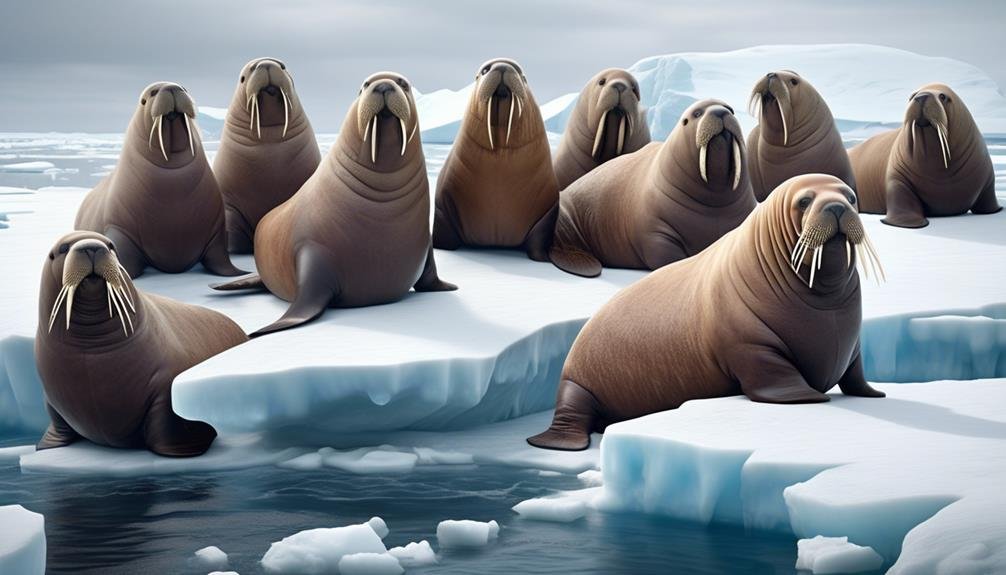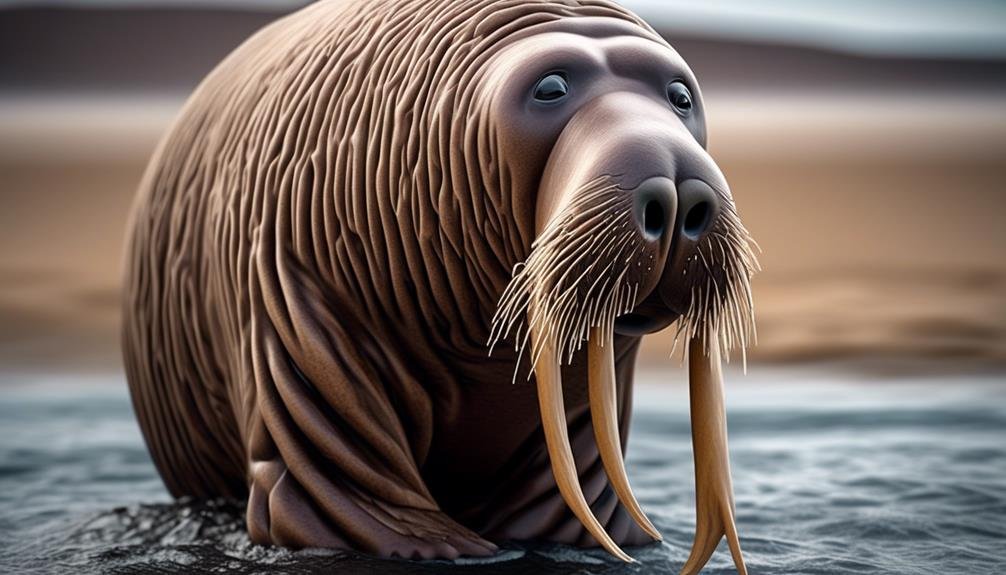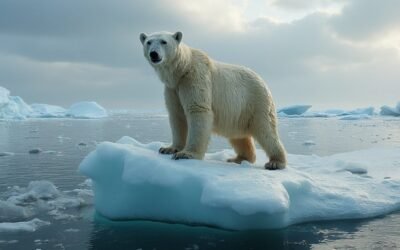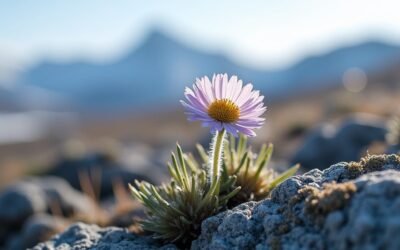Walrus: The Majestic Creature of the Arctic
The walrus, a majestic and intriguing creature, resides in the vast expanse of the Arctic waters. With two subspecies, the Atlantic and Pacific walrus, their populations remain a subject of study and concern. These marine mammals, known for their remarkable tusks, play a crucial role in the Arctic ecosystem.
Noteworthy Attributes:
- Length and Weight: Walruses can reach staggering lengths of up to 3.6 meters and weigh over 1,500 kilograms.
- Tusks: The walrus possesses impressive tusks that serve multiple purposes, including defence, foraging, and establishing dominance.
- Habitat: Walruses primarily inhabit the Arctic waters, where icy currents flow like veins through the frozen landscape.
- Diet: Their diet consists mainly of benthic invertebrates, such as clams, snails, and worms, which they locate using their sensitive whiskers.
- Behaviour: Walruses are highly social animals, often forming large herds on ice floes. They communicate through vocalizations and body language.
- Conservation Efforts: Due to the increasing threat of climate change and habitat loss, conservation efforts are dedicated to safeguarding the future of walruses. These include monitoring their populations, protecting their habitats, and raising awareness about the importance of preserving Arctic ecosystems.
Meaningful Descriptors:
- Arctic Ecosystem: The walrus plays a vital role in the Arctic ecosystem, contributing to the balance of marine life and nutrient cycling.
- Climate Change: The impact of climate change poses a significant threat to walruses as melting sea ice affects their habitat and availability of food.
- Endangered Species: The declining populations of walruses have raised concerns about their conservation status and the need for proactive measures to ensure their survival.
- Keystone Species: Walruses serve as keystone species in the Arctic, influencing the structure and function of the ecosystem through their feeding habits and interactions with other species.
- Research and Monitoring: Ongoing studies and monitoring programs provide valuable insights into walrus populations, behaviour, and the effects of environmental changes on their survival.
- International Cooperation: Conservation efforts for walruses require collaboration among nations to establish protected areas, implement sustainable fishing practices, and mitigate the impacts of climate change.
The walrus is a remarkable creature inhabiting the Arctic waters. Its unique characteristics, such as impressive tusks, social behaviour, and vital role in the Arctic ecosystem, make it a subject of study and conservation efforts. By understanding and protecting these magnificent creatures, we can contribute to the preservation of the fragile Arctic environment.
Key Takeaways
The walrus is a symbol of resilience in the face of environmental challenges. They are an important species that plays a vital role in maintaining the health of our oceans. Climate change poses a serious threat to their habitats and populations, making it crucial for us to take action. By conserving their habitats and reducing our carbon footprint, we can ensure the survival of these remarkable creatures and preserve the beauty and diversity of our planet’s marine ecosystems.
To protect the walrus and the marine ecosystems they inhabit, it is imperative that we act now. Conservation efforts and reducing our impact on the environment are key. By taking these steps, we can help ensure a future where the walrus thrives and our oceans remain healthy and vibrant.
Noteworthy Attributes:
- Resilience in the face of environmental challenges
- Symbol of conservation and preservation
- Vital role in maintaining the health of oceans
- Threatened by climate change and habitat loss
- Importance of conserving their habitats
- Need to reduce our carbon footprint
- Preservation of beauty and diversity in marine ecosystems
Meaningful Descriptors:
- Remarkable creatures
- Crucial for us to take action
- Survival of the walrus and marine ecosystems
- Protection against climate change
- Conservation efforts and reducing our impact
- Thriving walrus populations
- Healthy and vibrant oceans
Together, we can make a positive impact and secure a better future for the walrus and our planet. Let’s work together to safeguard the future of these majestic creatures and the delicate balance of our natural world.
Scientific Classification
Walruses, scientifically classified as Odobenus, are marine mammals belonging to the order Carnivora and the family Odobenidae. They’re the only living species within the Odobenidae family. Walruses can be further divided into two recognized subspecies: the Pacific walrus (Odobenus rosmarus divergens) and the Atlantic walrus (Odobenus rosmarus rosmarus).
As part of the broader group of marine mammals, which includes seals, sea lions, and whales, walruses have unique and specialized adaptations for life in Arctic and sub-Arctic marine environments. They rely on sea ice for various activities such as resting, giving birth, and escaping predators. Their tusks play a crucial role in creating and maintaining breathing holes in the ice, allowing them to access the water for feeding and respiration.
Understanding the scientific classification of walruses is essential for studying their biology, behaviour, and conservation needs. By recognizing their distinct taxonomic position within the Carnivora order and Odobenidae family, scientists can gain insights into their ecological role and implement effective conservation strategies to protect these remarkable animals.
Noteworthy Attributes:
- Scientific order: Carnivora
- Family: Odobenidae
- Genus: Odobenus
- Subspecies: Odobenus rosmarus divergens (Pacific walrus) and Odobenus rosmarus rosmarus (Atlantic walrus)
Meaningful Descriptors:
- Marine mammals
- Specialized adaptations
- Arctic and sub-Arctic environments
- Sea ice reliance
- Breathing holes
- Unique tusks
- Biology, behavior, and conservation needs
Habitat
Walruses: Protecting their Habitat and Ensuring their Survival
Noteworthy Attributes:
- Walruses rely on sea ice for various activities such as resting, breeding, giving birth, and escaping predators.
- Pacific walruses depend on stable sea ice for resting, breeding, giving birth, nursing their young, and seeking shelter from rough seas and predators.
- Atlantic walruses prefer to rest on sea ice but also utilize shores during the summer and autumn.
- Walruses migrate with ice floes, using sea ice as a platform for rest.
- Walrus mothers leave their calves on ice floes while diving for food.
Meaningful Descriptors:
- Walruses are a keystone species in the Arctic marine ecosystem due to their dependency on stable sea ice habitats.
- Industrial activity and melting sea ice caused by climate change pose threats to the walrus population.
- Diminishing sea ice forces more Pacific walruses to rest on land, farther away from their feeding grounds.
- Increased gathering of walruses on land can be deadly, especially for young calves.
- Conservation efforts are crucial to protect the walruses’ habitats and prevent disturbances.
- Walruses are highly susceptible to disturbance and noise and rely on stable habitats for their survival.
Preserving the habitat of walruses is of utmost importance for their long-term well-being. As a keystone species in the Arctic marine ecosystem, walruses play a significant role in maintaining the balance of this delicate environment. However, they face numerous challenges, particularly due to industrial activity and the melting of sea ice caused by climate change.
Pacific walruses heavily rely on stable sea ice for various activities such as resting, breeding, giving birth, nursing their young, and seeking shelter. Unfortunately, as sea ice diminishes, more Pacific walruses are forced to rest on land, which is farther away from their feeding grounds. This increased gathering on land can be dangerous, especially for young calves.
To ensure the survival of walruses, conservation efforts are crucial. These efforts aim to protect the walruses’ habitats and prevent disturbances that can disrupt their natural behavior. Walruses are highly susceptible to disturbance and noise, making it essential to create and maintain stable habitats for their well-being.
Diet

Pacific walruses in the Arctic have evolved to depend on a diverse diet for their survival in their unique environment. Their diet consists of a variety of marine creatures, including clams, molluscs, worms, snails, soft shell crabs, shrimp, sea cucumbers, and fish. Walruses primarily feed at the bottom of shallow waters, using their sensitive whiskers to detect food on the ocean floor. They’ve adapted to their specific diet and habitat, relying on stable feeding grounds and habitats to ensure their survival.
Noteworthy Attributes:
- Fish: In addition to the aforementioned marine creatures, walruses also consume fish, which adds variety to their diet and showcases their adaptability to different food sources.
- Hunting: Walruses are impressive hunters, capable of swimming at speeds of up to 35km/h to chase down their prey. Their agility in hunting allows them to secure their diet in the ocean.
- Weight and Energy: The diet of molluscs, crustaceans, worms, and fish contributes to the weight of adult walruses, which can reach up to 1.5 tonnes. Their reliance on their diet for energy and sustenance is evident in their large size.
Meaningful Descriptors:
- Adaptability: Walruses have adapted to their environment by incorporating a diverse range of food sources into their diet. This adaptability ensures their survival in the Arctic.
- Sensory Abilities: Walruses use their sensitive whiskers to detect food on the ocean floor, showcasing their remarkable sensory abilities.
- Size and Weight: Adult walruses can reach weights of up to 1.5 tonnes, highlighting the importance of their diet for their growth and energy needs.
Behaviour
Walruses: Survival Strategies in the Arctic
Noteworthy Attributes:
- Formation of large herds for communication and protection against predators
- Display of maternal instincts to protect calves from danger
- Preference for resting on sea ice for breeding, giving birth, and nursing young
- Adaptations to withstand freezing temperatures, such as long tusks and thick blubber
Meaningful Descriptors:
- Male and female walruses exhibit cooperative behaviour, forming large herds where they communicate through bellowing and snorting sounds. These herds provide a sense of community and protection against predators in the Arctic.
- Female walruses demonstrate their maternal instincts by using their flippers to pick up their calves and holding them to their chest when threatened. They then dive into the water to escape potential danger.
- Resting on sea ice serves multiple purposes for walruses. It provides a stable platform for breeding, giving birth, and nursing their young. Additionally, the sea ice offers protection from rough seas and predators.
- Walruses have evolved adaptations to withstand freezing temperatures. They grow long tusks, which are elongated canine teeth, that they use for various tasks such as hauling themselves out of the water or breaking through ice. Beneath their skin, they have a thick layer of blubber that helps insulate them from the cold.
Conservation

Walrus conservation is critical for safeguarding the populations and habitats of these magnificent creatures. Addressing the threats they face, including climate change, industrial activities, and human disturbances, requires effective conservation measures. Here are three key aspects of walrus conservation:
- Sustainable hunting practices: Indigenous communities have a long-standing tradition of walrus hunting for sustenance and cultural purposes. To ensure the conservation of walrus populations, it’s essential to implement sustainable hunting practices. This involves harvesting only a limited number of walruses, allowing their numbers to replenish. Collaborative efforts between indigenous communities and conservation organizations can strike a balance between preserving cultural practices and protecting walrus populations.
Noteworthy Attributes:
- Sustainable hunting practices
- Limited harvesting to protect walrus populations
- Habitat protection and preservation: Walruses are highly sensitive to environmental changes and disturbances. Therefore, preserving their stable habitats and minimizing disruptions is crucial for their long-term conservation. Designating protected areas and implementing regulations to minimize noise pollution and physical disturbances can provide walruses with the necessary environments for their survival and reproduction.
Noteworthy Attributes:
- Habitat preservation
- Minimizing disturbances to walrus habitats
Climate change mitigation: Climate change poses a significant threat to walruses and their habitats. Rising temperatures, melting sea ice, and changing ocean conditions directly impact their ability to find food and access resting platforms. To address this, conservation efforts must include initiatives to reduce greenhouse gas emissions and mitigate the effects of climate change. By tackling the root causes of this global issue, we can ensure the survival of walrus populations and protect their ecosystems for future generations.
Noteworthy Attributes:
- Climate change mitigation
- Reducing greenhouse gas emissions
Meaningful Descriptors:
- Rising temperatures and melting sea ice affecting walruses
- Changing ocean conditions impacting walrus food sources
- Mitigating the effects of climate change on walrus habitats
Climate Change Impacts
Walruses and Climate Change Impacts
The impacts of climate change on walruses and their habitats are significant. Rising temperatures are causing the melting of sea ice, which is forcing more Pacific walruses to rest on land further away from their usual feeding grounds. This increased gathering on land can be deadly, especially for young calves, and disrupts their natural behavior. Additionally, climate change is opening up the Arctic to shipping, tourism, industry, and noise, posing a threat to Atlantic walruses and their habitats.
Walruses, which reside in the polar regions, are adapted to survive in freezing temperatures. They’ve a thick layer of blubber beneath their skin, up to 2 inches thick, which acts as insulation against the cold. This blubber helps them stay warm during long periods spent in the water and on the ice.
One of the distinctive features of walruses is their long tusks, which can grow up to 3 feet long. These tusks are actually elongated canine teeth and serve multiple purposes. They help walruses haul themselves onto the ice, fight off predators, and obtain food from the sea floor. Walruses use their tusks like ski poles to push themselves out of the water and onto the ice, making them highly efficient swimmers and divers.
Noteworthy Attributes:
- Rising temperatures and melting sea ice are impacting walruses and their habitats.
- Increased gathering of Pacific walruses on land due to melting sea ice.
- Climate change opening up the Arctic to shipping, tourism, industry, and noise.
- Thick layer of blubber beneath walruses’ skin for insulation against the cold.
- Walruses’ tusks, which can grow up to 3 feet long, serve multiple purposes.
Meaningful Descriptors:
- Pacific walruses resting on land further from their usual feeding grounds.
- Disruption of natural behaviour and danger for young walrus calves.
- Threat to Atlantic walruses and their habitats from shipping, tourism, industry, and noise.
- Adaptation to freezing temperatures through blubber insulation.
- Use of tusks for hauling onto ice, defense against predators, and obtaining food from the sea floor.
Other Interesting Facts

Walruses: Amazing Adaptations and Impressive Size
Noteworthy Attributes:
- Walruses have developed adaptations that allow them to survive in freezing temperatures. Their thick blubber acts as insulation, protecting them from temperatures as low as -95°F.
- They also have the ability to slow down their heart rate, which helps them conserve energy and endure the cold for extended periods.
- Pacific walruses can grow up to 3.6 meters in length and weigh over 1,500 kilograms, making them one of the largest marine mammals.
Meaningful Descriptors:
- Walruses possess tusks, which serve multiple purposes such as hauling themselves out of the water, creating breathing holes in ice, and defending against predators or engaging in intra-species fights.
- Female walruses are particularly protective of their calves, using their flippers to pick them up and hold them close to their chests when threatened.
- Walruses are also known to dive into the water to escape predators.
It is crucial to note that walruses are highly sensitive to disturbance and noise. Mass gatherings of these animals can lead to dangerous stampedes if they’re spooked. Therefore, conservation efforts are essential to protect these remarkable creatures and their habitats.
What Are the Similarities and Differences Between Walruses and Lemmings?
Walruses and lemmings are both animals known for their unique behaviors. While walruses are large marine mammals known for their tusked appearance and their social nature, lemmings are small rodents known for their burrowing and lemme habits and behavior. Despite their differences in size and habitat, both animals play important roles in their respective ecosystems.
Frequently Asked Questions
What Are 5 Interesting Facts About Walruses?
5 Interesting Facts About Walruses
Noteworthy Attributes:
- Walruses are large marine mammals that inhabit Arctic regions.
- They’ve long tusks that can grow up to 3 feet in length and are used for various purposes, including breaking through ice and defending against predators.
- Walruses have a diverse diet that primarily consists of clams and other marine organisms found on the ocean floor.
- These fascinating creatures communicate through a combination of vocalizations, body movements, and even using their whiskers to sense vibrations in the water.
- Walruses exhibit polygamous behavior during breeding season, with dominant males competing for mates.
Meaningful Descriptors:
- Walruses are known for their impressive size, with adult males weighing up to 1.5 tons.
- They’ve a thick layer of blubber that helps them stay warm in the icy waters of the Arctic.
- Walruses are highly social animals and can often be found in large groups called haulouts, where they rest, socialize, and take care of their young.
- Conservation efforts are in place to protect walruses and their habitats, as they’re considered a vulnerable species due to the impacts of climate change and human activities.
- Walruses have a unique adaptation known as a ‘vibrissae,’ which are long, sensitive whiskers that help them locate food and navigate in dark or murky waters.
How Fast Can a Walrus Run?
Walruses are capable of running at top speeds comparable to humans. They utilize their four flippers to navigate swiftly, allowing them to evade danger and predators on land. The running speed of walruses is influenced by factors such as body size, muscle strength, and the terrain they’re traversing. Their ability to run is unique among animals, as it’s a crucial adaptation for survival in their Arctic habitat.
The agility and speed with which walruses can run are essential for their hunting strategies and hold evolutionary significance.
Noteworthy Attributes:
- Running speed comparable to humans
- Use of four flippers for swift movement
- Adaptations for survival in the Arctic habitat
- Importance of running agility and speed for hunting strategies
Meaningful Descriptors:
- Running abilities as a unique adaptation
- Escaping danger and predators on land
- Influence of body size, muscle strength, and terrain on running speed
- Evolutionary significance of running abilities in walruses’ Arctic habitat
Why Do Walruses Turn Pink?
Walruses turn pink due to a combination of natural pigmentation, environmental factors, and sun exposure. The pink color is caused by the dilation of blood vessels, which allows heat to escape and helps regulate their body temperature on land. Additionally, bacteria present in their skin can contribute to the pink hue. Genetic variations and age-related changes may also play a role in the intensity of the pink color. Understanding this phenomenon provides insights into walrus behavior and their ability to adapt to their Arctic habitat.
Noteworthy Attributes:
- Natural pigmentation
- Environmental factors
- Sun exposure
- Dilation of blood vessels
- Heat regulation
- Bacteria in the skin
- Genetic variations
- Age-related changes
Meaningful Descriptors:
- Pink color caused by blood vessel dilation
- Heat regulation on land
- Contribution of bacteria to the pink color
- Role of genetic variations and age-related changes in intensity of pink color
- Walrus behavior and adaptation to Arctic habitat
How Long Does a Walrus Live?
Walruses have a relatively long lifespan compared to other marine mammals. The oldest recorded walrus lived up to 40 years in the wild. Factors such as predation, habitat conditions, and food availability can influence their longevity. However, the impact of climate change poses a significant threat to their lifespan. Melting sea ice forces walruses to rest on land further from their feeding grounds, which can be deadly, especially for young calves. Conservation efforts are crucial to protect their habitats and ensure their survival.
Noteworthy Attributes:
- Long lifespan compared to other marine mammals
- Oldest recorded walrus lived up to 40 years in the wild
- Factors such as predation, habitat conditions, and food availability influence their longevity
- Climate change poses a significant threat to their lifespan
- Melting sea ice forces walruses to rest on land further from their feeding grounds
Meaningful Descriptors:
- Relatively long lifespan
- Predation, habitat conditions, and food availability affect longevity
- Climate change as a threat to lifespan
- Melting sea ice and its impact on walruses’ feeding grounds
Do Walruses and Ivory Gulls Interact in Their Natural Habitats?
Walruses and ivory gulls both inhabit Arctic regions, but their interactions are relatively limited. Walruses primarily feed on benthic organisms, while ivory gulls often scavenge carcasses left behind by predators. For more insight into these relationships, learning ivory gull species facts can offer a clearer understanding of their ecological roles.
Conclusion
The walrus is a symbol of resilience in the face of environmental challenges. Climate change poses a serious threat to their habitats and populations, making it crucial for us to take action. By conserving their habitats and reducing our carbon footprint, we can ensure the survival of these remarkable creatures and preserve the beauty and diversity of our planet’s marine ecosystems.
Let’s work together to safeguard the future of these majestic creatures and the delicate balance of our natural world. The walrus is an important species that plays a vital role in maintaining the health of our oceans. Through our efforts, we can make a difference and ensure their continued existence.
It’s imperative that we act now to protect these incredible creatures and the ecosystems they rely on. Conservation efforts and reducing our impact on the environment are key to preserving the walrus and the marine ecosystems they inhabit. By taking these steps, we can help ensure a future where the walrus thrives and our oceans remain healthy and vibrant.
Together, we can make a positive impact and secure a better future for the walrus and our planet.


